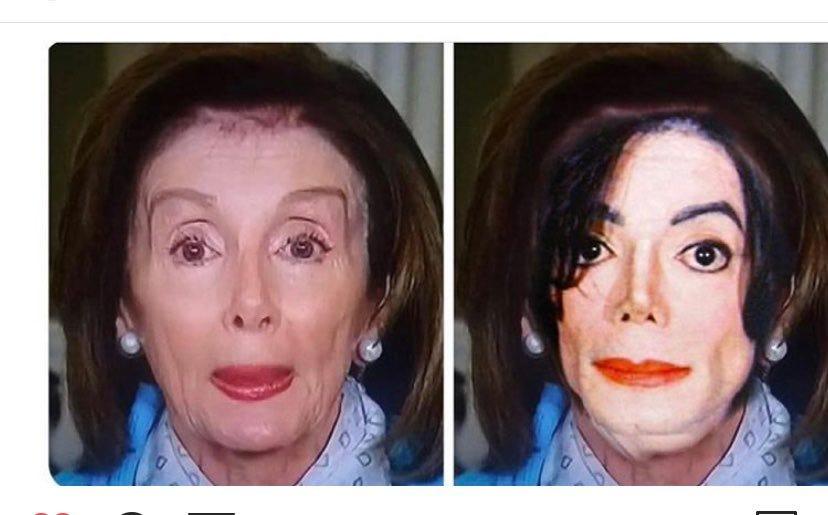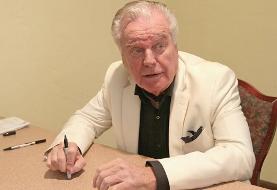What Happens after Botox? The Tragic Story of a Former Hollywood Star
Since Botox and fillers are popular among many Iranians across the world, we decided to share the tragic story of a Hollywood star and what we can learn from it.
Former 'Real Housewives' star Brandi Glanville has spent $70,000 on medical bills but still has few clues about what has caused the parasites ruining her face and health. Some of her followers suggest that her health issues may be attributed to Botox or fillers – she's been open about getting both over the years. And it’s not cheap Botox. Like other actresses, she has used top Hollywood doctors for her Botox surgeries. One may even link the infections to the toxic spike proteins known to be unleashed in the human body after COVID-19 or COVID-19 vaccinations, causing neurological and vascular diseases.
What happened?" she wrote. "I wish I knew. I've been in & out of the hospital this passed year 1/2 spent almost every dollar I have trying to figure it out. Some Dr.'s say I have a parasite that jumps around my face. Some say it's stress induced edema. I personally say it's Bravo."
Bravo is the TV network some satirists call “the network of debauchery, homosexuality and anything against God and normal family life!” like the "Real Housewives" series that promotes the hedonistic and promiscuous lives of so-called “real” housewives.
In January, Glanville was named in a lawsuit filed by fellow "Real Housewives" star Caroline Manzo, who accused Glanville of sexual assault, though she didn't name her as a defendant – instead, Manzo sued Bravo. In addition to being named in Manzo's suit against Bravo, Glanville has been discussing taking legal action of her own against the network. She accused "Real Housewives" host and executive producer Andy Cohen of sexual harassment and claimed: "This stress has ruined my health. I have uncontrollable stress induced angio-edema I haven’t worked for a year & half." Then, in October, she claimed her lawyers dumped her too.
Chronic stress can certainly wreak havoc in the human body. Chronic pleasure seeking can also do the same. In fact, the neuropeptide that feeds our pleasure-seeking and addictions (dopamine) is a chemical homologue to the hormone that causes stress to our body (adrenaline or epinephrine). I have explained the simple science of hormones and their balance in my book The ROGUE Brain. Most of health problems start with our brain.
But Botox wouldn’t help with our vulnerability to stress-induced infections. The following explains what happens after Botox injection. This is a short abstract from an earlier article. Here is Some Rarely Discussed Information. You can read the whole science article on Simplescience.Substack.com:
Science:
BoTox is short for Botulinum Toxin, or botulinum neurotoxin, which is a neurotoxic protein produced by the bacterium Clostridium botulinum. The toxin prevents the release of the neurotransmitter acetylcholine at the neuromuscular junctions, thus causing flaccid paralysis. An aerosolized or foodborne botulinum toxin is studied as a biological weapon. The toxin also causes the disease botulism. The concentration and focal/local administration of cosmetic Botox injections are controlled to minimize the risk of widespread (diffuse) or acute paralysis.

History:
It wasn’t until the 1970s that Alan Scott, an ophthalmologist, turned the botulinum toxin into Oculinum, a pharmaceutical to treat lazy eyes (strabismus). In 1991 Dr. Scott sold the rights to make Oculinum to Allergan, which changed the drug’s name to Botox. In the decades that followed, the public’s appetite for it as a facial enhancement exploded. Movie directors began complaining that actors were losing their ability to frown or smile properly — “frozen face” became a trope of the tabloids. It was derided as a pernicious enabler of a youth-obsessed society, a practice best left to the stars of reality television.
Cosmetic but Soul-less Faces?
In recent years, the toxin is used commercially for medical (see below) and cosmetic purposes to relax neuromuscular junctions and prevent them from reacting to emotions (as in frowning or wrinkled faces) or stresses (as in migraines). As a result, Botox faces often seem to lack emotional depth and passion (soul), similar to facial figures in movies using the “motion capture” technology.
The Pioneer’s Face:
Dr. Jean Carruthers (seen in the picture above), the Canadian Professor/businesswoman who pioneered the cosmetic use of Botox in the world (and has had drastic changes of her facial appearance over the years), has admitted that can be a problem but they justify it as such: “The worst complication of Botox treatment is reduced expressivity… We felt bad for a week or two until we suddenly realized.. Most people are quite happy to reduce their ability to frown; if they need to express compassion they can tell people how they feel.”
What Happens Over Time?
Over time, numbed nerves, like everything else in the mighty nature, will try to sprout around the numbed terminus and gain their function (life). So Botox injections may work locally for 3-4 months after which additional filler and injections (boosters like vaccines) may be needed. Also, in the long-term, the targeted or nearby muscles, not being in use or needed, may lose their function all together and experience “atrophy’ (loss of mass) leading to facial “deformities.” As a result, certain faces dramatically change over time. This is why older movie fans who have not followed their favorite star for a while, sometimes have a hard time recognizing the new shifting looks of actors like Sylvester Stallone (shown in the picture above next to his mother who also has had heavy Botox) or actresses like Helen Hunt and Nicole Kidman (in pictures).
The Percentage of Happy and Unhappy Botox Recipients:
Surveys indicate “about half” of Botox patients indicate they “felt better” about their appearance after the procedure. Among the other half, there are many who seriously regret the injections. In recent years, a large number of celebrities have gone public to share their regret and admission of their poor judgment. Nicole Kidman is among those people along with actress Jamie Lee Curtis, who regrets getting Botox because she thinks it makes her look like a 'Plastic Figurine!' TV celebrity Simon Cowell swore off Botox and fillers after saying it made his face look "like something out of a horror film" and his 8-year-old son Eric was "in hysterics" when he saw Simon’s face! Actress Courteney Cox has also publicly called getting Botox fillers her biggest beauty regret: “I messed up. You don’t realize that you look a little off, so then you keep doing more because you look normal to yourself! And you look in the mirror and go, Oh, that looks good. You don’t realize what it looks like to the outside person. I look at pictures of me when I thought I looked OK [with Botox], and I can’t believe it.”

Denials and Controversies:
From time to time, we see controversies online about the use of Botox. Actress/Singer/Dancer Jennifer Lopez was harshly criticized in the social media when promoting her skincare product line and claiming her smooth skin (after treatment, as pictured here) resulted only from application of her product. Many commentators accused her of lying and using Botox. Lopez denied use of Botox or other surgeries. But at least a board-certified dermatologist and a plastic surgeon disagree and judging from her smooth forehead, eye brows and lack of crow’s feet (wrinkles around the eyes), believe she has had Botox and possibly other injections.
Potential Harm:
One major problem may be iatrogenic botulism which happens because Botox is either injected into the wrong muscle group or with time spread from the site of tissue injection to adjacent or sometimes far off structures, resulting in inadvertent disabling of muscles and serious adverse reactions like facial paralysis, swallowing disorders, direct paralysis, headaches, flu-like symptoms, and allergic reactions. Neurogenic muscle atrophy has been observed for 12 months after a single dose of Botox injection. Animal studies have shown that botulinum toxin can spread to a distance of 30–45 mm from the injection site. As revealed by rodent experiments, botulinum toxin receptors exist in the central nervous system and a small amount of botulinum toxin even crosses the blood–brain barrier. The toxin spread can lead to botulism, muscle weakness or paralysis, dysarthria, dysphonia, dysphagia, and respiratory arrest. These adverse events may be fatal if left untreated. In 2019, there were approximately 71,221 Botox-related emergency room visits in the United States. This was not widely reported in mainstream (corporate-sponsored) media.
Immune and Autoimmune Complications:
Emerging evidence shows that repeated injections and higher doses of BoNT-A may provoke the immune system to produce neutralizing antibodies, which lead to reduced or non-existent response to subsequent treatments. Also, injections of Botox may cause thyroid complications (such as Hashimoto's thyroiditis) in predisposed persons based on molecular mimicry with thyroid autoantigens.

Thinned Wavy Skins Exposing Veins:
Many Botox patients also complain of a visible waviness, discoloration and thinning of the skin (particularly the skin of the forehead) after years of Botox use. This might mean exposure of subdermal veins between areas of normal thickness.
Medical Uses of Botox:
Although not as common as cosmetic uses, Botox may be used to treat chronic migraines and certain neuro-muscular conditions characterized by overactive muscle movement, including spams of neck, head, eyelids, and limbs as in cerebral palsy and post-stroke, post-spinal cord injuries. There are also serious adverse events and injuries reported with medical uses of Botox.
The author of the article, then shares his own Philosophy as a Scientist: As humans, we are entitled to search for tools that make us happy about our appearance. But besides depending on our physical appearance and our body (what Bible and religious texts call The Temple of the Holy Spirit), our spirit, joy and inner peace relies heavily on balancing our emotional energy and expressions. Through these facial and body expressions, we connect to other humans and provide feedback to each other. As a eusocial species (I share more details in my book) the expressions of sorrow, pain, fear, anger and joy are all important parts of improving our human communities If we gain a smoother skin at the expense of our ability to express (share) emotions with each other, we will not only break down the feedback loops with our human ecosystem, but also build up all that pent up energy inside. There is a reason movement of muscles (including facial muscles) engage acetylcholine and same neurotransmitters which are involved in balancing our body’s metabolism (energy) to ensure we remain healthy (balanced). Frowning not only is part of our “feedback loop,” which tells people they may be hurting us, but it also “releases” some psychological energy (stress) in our body. Joy and happiness are contagious when expressed facially and may trigger the release of oxytocin (the healthy “trust” neuropeptide I discuss in my book). I explain this theme and other paths to achieving metabolic balance (health) in my book.
Related to Health:
- Professor Gøtzsche Against the Medical Industry: Drugs, Mammography and Prostate Cancer Screening
- Prominent Iranian American Doctor Closely Watching a Supreme Court Case
- Controversial Videos: Chemtrails, Putin, Vaccines, Jon Stewart, Robert Kennedy
- More Troubling News for Antidepressants and Vaccines
- Garlic in Persian Traditions: Why is Good Garlic so Costly and Imported Garlic so Cheap?
- The Little-known History and Science of Botox
- Your Diet Impacts Risk of Diabetes and Non-alcoholic Fatty Liver Disease
- Dr. Firouz Naderi Paralyzed from Neck Down: Was his Arrhythmia Vaccine-Related?
- Microparticles Released from Teabags can be Harmful
- A Recipe for Fresh, Tasty Homemade Persian Bread
- Which Persian Saffron Grades Have Stronger Anti-cancer Properties?
- Cancer-causing Baby Powder? Did the Manufacturer Know about it for Decades?
- American Celebrities Who are Vaccine-Hesitant
- Film Shows How DuPont Covered up Health Risks of Teflon Contamination Across globe
- A Simple Guide to How Your Brain and Body Communicate, Balance or Burn Out
























































